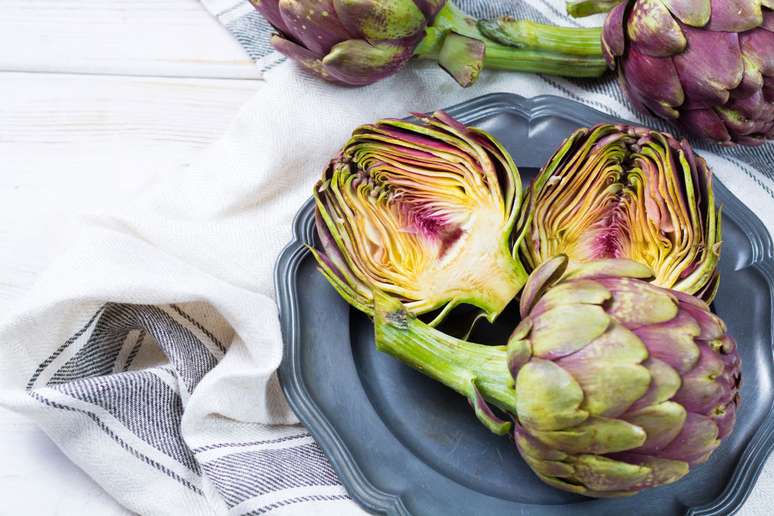Antioxidants inhibit a process called oxidation, which generates free radicals that lead to cellular damage.
Antioxidants are compounds that reduce or inhibit cellular damage through their ability to neutralize molecules called free radicals, molecules that have one or more unpaired electrons in their outer orbit, making them unstable and highly reactive. The body creates them through normal endogenous metabolic processes, including energy production.
The body also produces them in response to environmental and lifestyle factors, such as sun exposure, smoking, alcohol consumption, among others. Antioxidants inhibit a process called oxidation, which generates free radicals that lead to cellular damage. Antioxidants interact safely with free radicals, neutralizing them before they can cause damage to proteins, lipids, and DNA.
Many of these nutrients are found naturally in foods. Fruits, vegetables, spices, and nuts contain thousands of different compounds that do this. For example: grapes, apples, pears, cherries, and berries contain a group of plant chemicals called “antioxidant polyphenols.” There are more than 8,000 of them in nature. Brightly colored fruits and vegetables also contain high concentrations of carotenoids, another class of antioxidants.
Check out the 12 antioxidant-rich foods below
1-Artichokes
The U.S. Department of Agriculture ranks artichokes as the 7th highest antioxidant food. Unlike other vegetables, artichokes provide more antioxidants when cooked. Try steaming them whole or roasting them in the oven.
2-Garlic
When it comes to antioxidant power, raw garlic is excellent. Allicin, the most important antioxidant in garlic, needs a few minutes to start working after you crush or mince the spice. Let the minced garlic sit before adding it to the dish. If you plan to cook it, keep the temperature below 140ºF or wait until it’s almost done to add it to the pan. Don’t overdo it! Too much garlic can irritate your stomach, cause bad breath, and lead to body odor.
3-Sweet potato
The orange hue of sweet potatoes makes them a great source of beta-carotene, an antioxidant that helps prevent disease. Keep portions reasonable, as carb-heavy potatoes can quickly spike blood sugar levels. Bake or microwave with the skin on to unlock its free-radical-fighting power.
4-Coffee
That morning cup of joe does more than just wake you up. The antioxidants inside can help prevent cell damage. Don’t load up on cream or sugar, which add calories. To avoid caffeine overload, limit yourself to three to four eight-ounce cups a day.
5-Dark chocolate
Chocolate lovers, rejoice. Your favorite candy provides antioxidants. The secret is to eat chocolate that is high in cocoa. Choose dark chocolate instead of milk or white chocolate. Enjoy in moderation, though. Chocolate candies are high in fat and sugar. For a sugar-free option, sprinkle unsweetened cocoa powder into your oatmeal or smoothie.
6-Cabbage
This leafy green provides beta-carotene, vitamin E, and vitamin C, all of which are antioxidants. Mix kale into salads or smoothies to get your daily dose. You can also serve it in soups and stews or cook it into crunchy “fries.” Just be aware that heat slightly reduces its antioxidant power.
7-Liver
Liver from beef, chicken, and other animals is packed with vitamin A, a powerful antioxidant that helps with bone health, vision, and the body’s defenses against disease. If you find the flavor too strong, soak it in milk before cooking, or mix small pieces into ground beef for chili or tacos. But go easy if you’re pregnant or watching your cholesterol. Too much vitamin A isn’t good for growing children. And liver is high in cholesterol.
8-Red and purple fruits
Name a berry and it’s probably a good source of antioxidants. Blueberries, cranberries, strawberries, blackberries, raspberries, and even goji berries top the list of antioxidant-rich fruits. Berries are low in calories and high in fiber. A cup of fresh or frozen fruit a day will do you good.
9-Walnuts
Compared to most common nuts, walnuts contain more polyphenols, a type of antioxidant. You only need to eat about seven of them to get the health benefits. Raw is best. Roasting can prevent the antioxidants from working well.
10-Red pepper
Bell peppers are good sources of antioxidants, but red bell peppers are the best. They are rich in carotenoids that may help prevent certain types of cancer. They are sweet enough to eat raw, which is how they best provide their antioxidants.
11-Tomatoes
Tomatoes are rich in lycopene, which is a type of antioxidant group called carotenoids. You will get a good amount of it by eating raw tomatoes. But you can increase your intake by cooking them in sauce or consuming them with a drizzle of oil.
12-Wine
A substance in red wine called resveratrol may help protect your heart by preventing damage to blood vessels. You can get the same benefit without the alcohol by eating red grapes. But if a glass of Merlot is part of your evening routine, it’s nice to know it can give you an antioxidant boost. But be careful: Limit yourself to one glass if you’re a woman, or two if you’re a man.
Source: WebMD
Source: Terra
Ben Stock is a lifestyle journalist and author at Gossipify. He writes about topics such as health, wellness, travel, food and home decor. He provides practical advice and inspiration to improve well-being, keeps readers up to date with latest lifestyle news and trends, known for his engaging writing style, in-depth analysis and unique perspectives.








